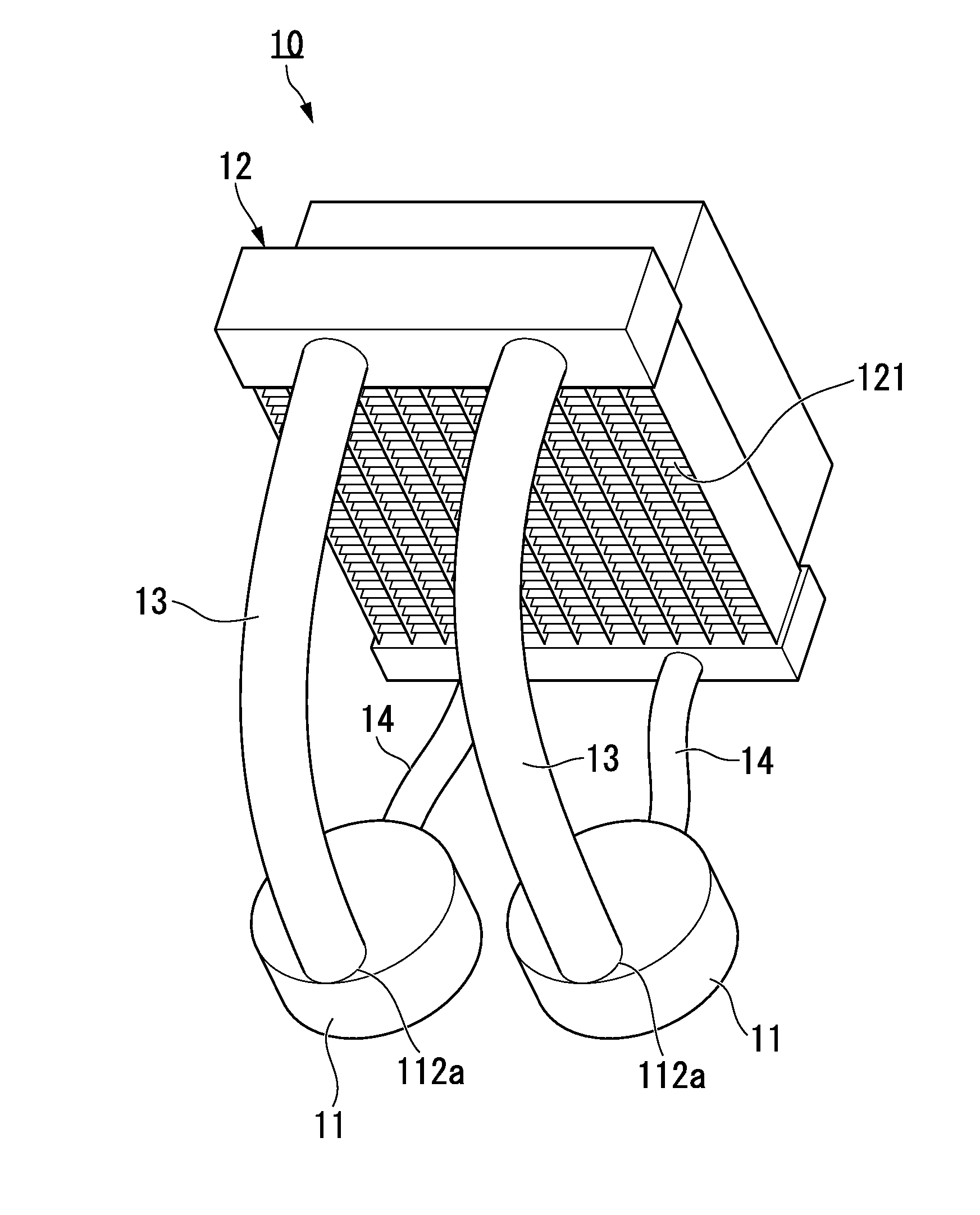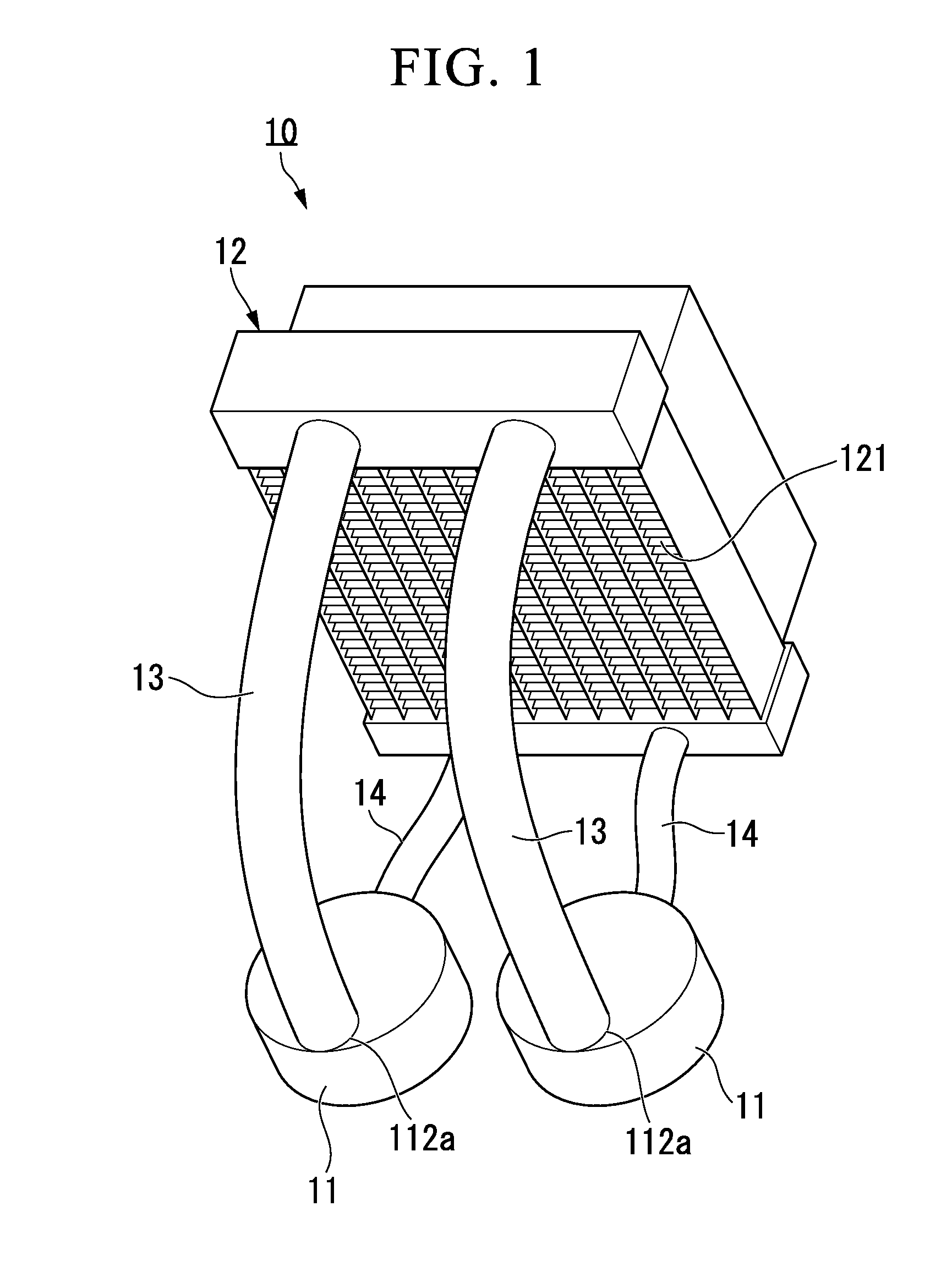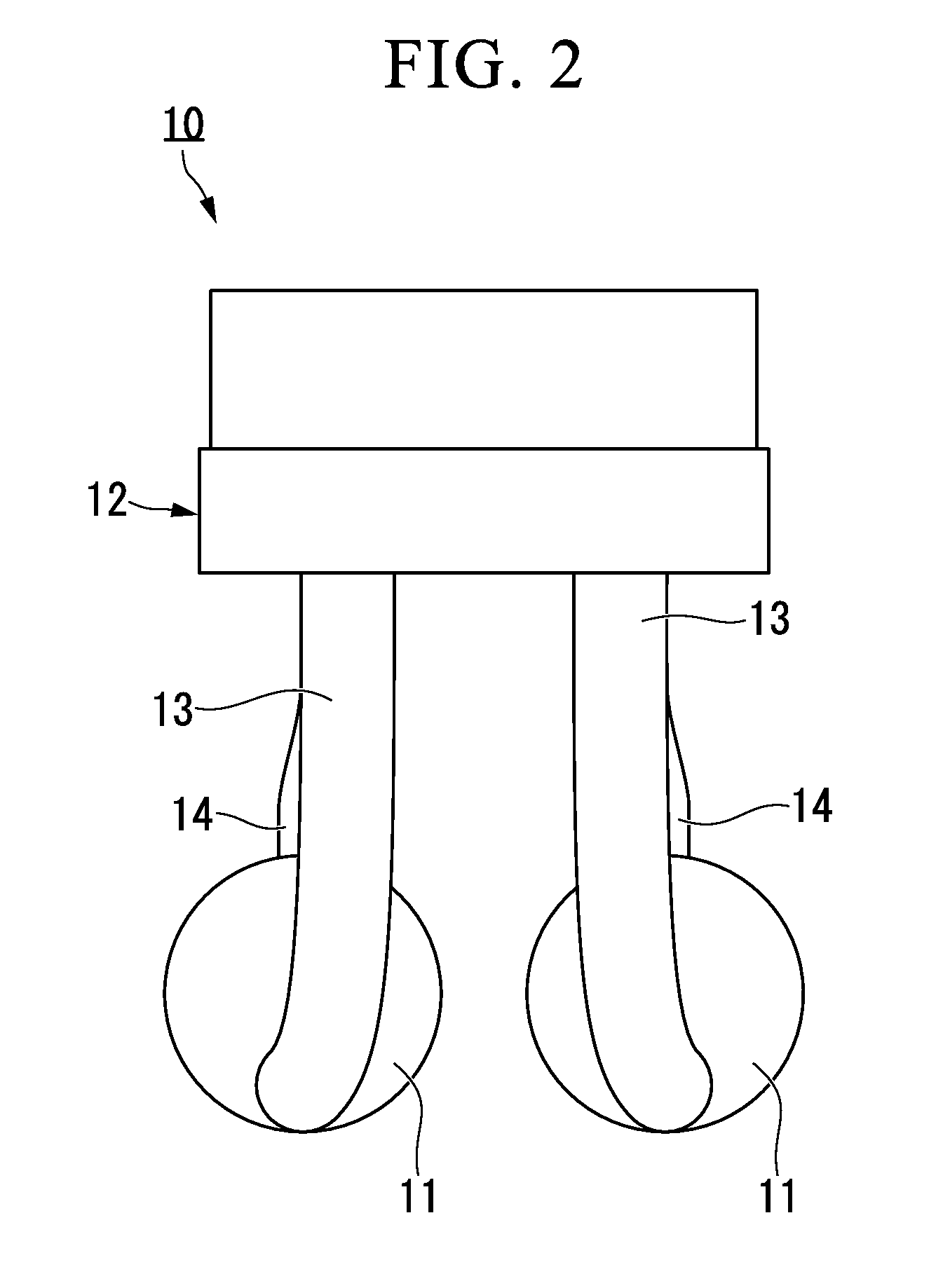Phase change cooler and electronic equipment provided with same
a technology of electronic equipment and cooler, which is applied in the direction of lighting and heating apparatus, semiconductor devices, basic electric elements, etc., can solve the problems of inability to extend the pipe upward and install the condenser, unavoidable condensation in the pipe, and difficulty in using it for various purposes, etc., to achieve the effect of reducing size, high working ratio and reliable cooling of parts
- Summary
- Abstract
- Description
- Claims
- Application Information
AI Technical Summary
Benefits of technology
Problems solved by technology
Method used
Image
Examples
first exemplary embodiment
[0051]Hereinbelow, exemplary embodiments of the present invention shall be described with reference to the drawings. First, the constitution of a phase change cooler according to a first exemplary embodiment of the present invention shall be explained. FIGS. 1 to 3 show the constitution of a phase change cooler 10 of the present exemplary embodiment. FIG. 1 is an outline perspective view of the phase change cooler 10. FIG. 2 is an outline plan view of the phase change cooler 10 shown in FIG. 1. FIG. 3 is an outline front elevation of the phase change cooler 10 shown in FIG. 1.
[0052]FIG. 1 shows the phase change cooler 10 according to the first exemplary embodiment of the present invention that has two heat receiving units 11 and one heat radiating unit 12.
[0053]As shown in FIGS. 4 and 5, an electronic part D provided on a substrate K is installed below the heat receiving unit 11 via thermally conductive grease, a heat radiation sheet, and the like. In order to maintain a thermal con...
second exemplary embodiment
[0070]Next, a phase change cooler 20 according to a second exemplary embodiment of the present invention shall be described. As shown in FIG. 14A and FIG. 14B, in the phase change cooler 20, a bypass tube 21 that mutually connects the heat radiating units 11 is provided in order to maintain the supply capability of the refrigerant R to the heat receiving units 11. There is a great possibility of the amount of heat generation changing with the working ratio of the heat generating electronic part D in an electronic device. By providing the bypass tube 21, in the case of the working ratio of one electronic part D being in a high state, the liquid is supplied not only from the liquid tube 14, but also from the adjacent heat receiving unit 11.
[0071]When the bypass tube 21 is connected so as to directly connect a plurality of heat receiving units 11 in this way, the supply capability of the liquid phase refrigerant R improves, and it is possible to maintain a good cooling performance even...
third exemplary embodiment
[0072]Next, a phase change cooler 30 according to a third exemplary embodiment of the present invention shall be described. As shown in FIG. 15, in the phase change cooler 30, the respective lengths of the vapor tube 13 and the liquid tubes 14 differ for each heat receiving unit 11. In electronic devices and the like in which the phase change cooler 30 according to the exemplary embodiment of the present invention is applied, with regard to the installation position of the heat generating electronic part D, requirements from the perspective other than cooling such as electricity are also important. In the case where the positions of the electronic parts D and the heat radiation position are determined, and the distance between each heat receiving unit 11 and the heat radiating unit 12 differs, by extending the vapor tube 13 and the liquid tube 14 as needed, it is possible to maintain the cooling performance. Also, use in conjunction with the bypass tube 21 of the second exemplary em...
PUM
 Login to View More
Login to View More Abstract
Description
Claims
Application Information
 Login to View More
Login to View More - R&D
- Intellectual Property
- Life Sciences
- Materials
- Tech Scout
- Unparalleled Data Quality
- Higher Quality Content
- 60% Fewer Hallucinations
Browse by: Latest US Patents, China's latest patents, Technical Efficacy Thesaurus, Application Domain, Technology Topic, Popular Technical Reports.
© 2025 PatSnap. All rights reserved.Legal|Privacy policy|Modern Slavery Act Transparency Statement|Sitemap|About US| Contact US: help@patsnap.com



